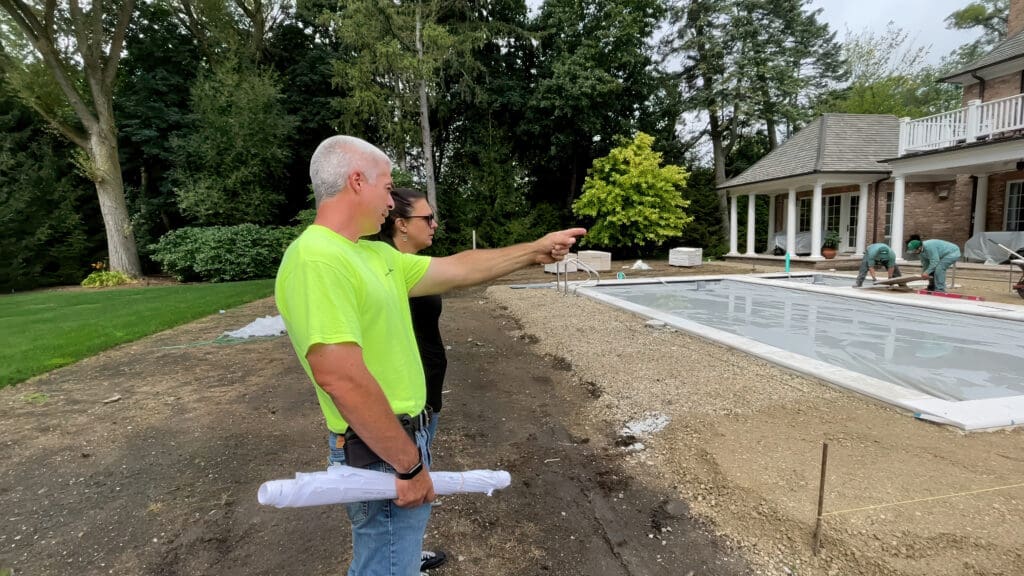
An order maker, or a client representative, is someone who is always looking for opportunities to enhance client properties.
This starts with understanding the client’s wants and needs. You can uncover these by viewing their inspirations on Pinterest and asking lots of questions.
“What are your hot buttons?” Marty Grunder, president and CEO of Grunder Landscaping Co. based in Miamisburg, Ohio. “What are you looking for in a contractor? How could we delight you? What’s sacred around here? Tell me about your past experiences with contractors, the good and the bad. Get them talking and listen and repeat back what you heard and you’ll learn.”
Balancing Client Preferences with Professional Expertise
Representing the client’s best interests means listening to their requests and combining them with your industry knowledge.
Frank Mariani, chairman of Mariani Landscape, based in Lake Bluff, Illinois, says after listening to a client’s wants, politely and positively challenge them on what they really want based on your expertise.

“When you go to a restaurant and you order steak, they may ask you, what temperature would you want? Do you want it rare? Medium rare? Well done?” Mariani says. “Outside of that, they really don’t want you to tell them what temperature to cook it at and how to make it, in a pan or in a broiler or on charcoal. You count on the restaurant to do it right.”
Similarly, you are the expert on what plants will thrive and which will die in a certain space, so you need to communicate this to clients when they make unrealistic requests.
“One of the hardest things to do is to tell a client that their idea is a bad one,” Grunder says. “We role play with our team on how to do that. “Once you get the hang of that, it’s not hard. Remember, the goal is to retain a client. You aren’t going to retain them if you do what they tell you to do, if you know it won’t work.”
Grunder says the key is to deliver the message kindly and offer similar alternatives.
“I think we have a responsibility to challenge them, but understand at the end of the day, the client is always right, and it’s their money,” Mariani says. “We have one choice when they want to do something that you know is wrong, and that choice is to try to push them in a different direction. If we can’t do that, then maybe that’s not a client that we really want.”
In the vein of it is the client’s money, Mariani learned early in his career that you need to provide a variety of options instead of assuming which route a client wants to take.
In one case, a client in her 70s requested three shade trees and when he gave her a proposal for two-inch maple trees, she went with another company that installed 7-inch maple trees. He explained to the client he assumed she didn’t want to spend that much money.
“She looked at me, she goes, ‘Frank, first of all, it’s not your money. It’s my money. I’m 75 years old, and I don’t want to wait for your two-inch trees to grow to be seven-inch trees,’” Mariani says. “I learned from that experience that I wasn’t thinking about what was best for the client. I was thinking, what would I want to do if it was my home?”
In a similar situation, another client with a walled estate wanted to install trees to replace their 60-foot-tall ash trees that had died. The client rep wanted to present a proposal for three-inch shade trees as a replacement and Mariani pointed out the clients were in their 80s. The client rep countered that was the size they could fit through the gate, but he asked if they had considered proposing the usage of a crane or helicopter to bring in bigger trees.
“Sure enough, they went with the helicopter,” Mariani says. “A lot of times, it’s just thinking what’s best for the client and giving them options, A, B, C, D, E and F.”
Dealing With Budget Restraints
Representing a client and providing them with their desired landscape can be challenging with a limited budget. Mariani says you first need to consider if a customer’s strict budget is based in reality.
“If they want to plant a four-inch tree and they say their budget is $200, they went to the wrong company,” Mariani says.
Mariani encourages talking about the budget before creating a design because the client needs to drive the cost of the project. He suggests doing a master plan and installing a landscape in phases if a client can’t afford to have the project completed all at once.
“I’m happy to go about doing that landscape in little baby bites, until they accomplish the overall great plan,” Mariani says. “Nothing wrong with that. Where I have a problem is somebody really requires a substantial landscape and what they say is, ‘Well, we want to do it, but we want to do it for 10% of what it really is going to cost.’ That’s not my client.”
Grunder says it’s often better to get an order than no order at all, so phases can be a good solution.
“I always say to my team and myself that if someone doesn’t buy my ideas, it’s because I didn’t show enough value in what I was presenting,” Grunder says.

